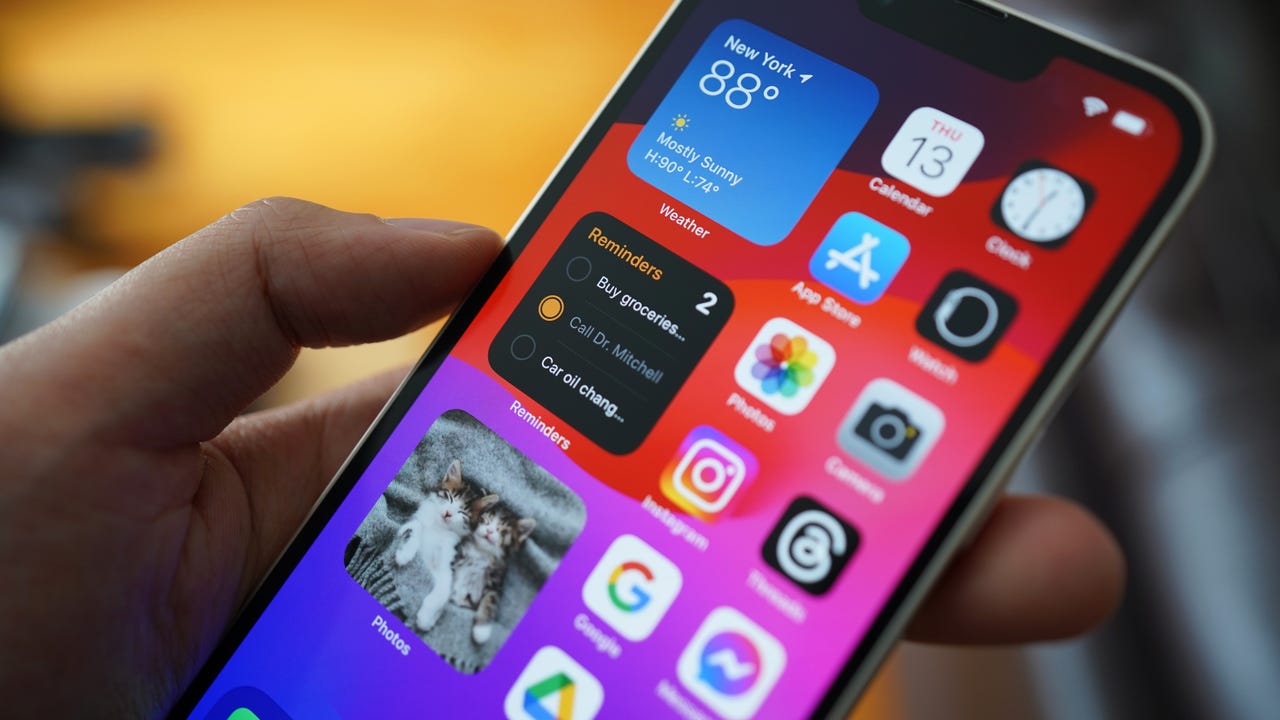Apple hints that iOS 17.2 will enable sideloading apps, but not for everyone

Android users have been sideloading apps for a very long time. What is sideloading? Essentially, it’s the ability to install third-party applications from outside the built-in app store (such as the Google Play Store). Unfortunately, this feature has caused problems because some of those third-party app stores can include apps with malicious code. This problem became so bad that, for a time, Google decided to lock down the feature. Users can now enable the feature in Settings > Apps > Special app access > Install unknown apps.
Also: How to find and remove spyware from your phone
However, I would warn against enabling this unless you are certain the app you want to install is 100% safe. Otherwise, you risk installing an app with malicious code that could turn out to be ransomware.
Trust me when I say that you do not want to experience that.
So, when it was announced that Apple — faced with new European Union regulations (specifically the Digital Markets Act, which takes effect in 2024) — was considering allowing the sideloading of applications in iOS, I was shocked. The company’s policy on sideloading has been clear (and strict) from the App Store’s early days. However, 9to5mac reported on November 10 that Apple was hinting at moving forward with that feature in the upcoming iOS 17.2.
Since 9to5mac’s report, it has come to light that Apple published a new document for Managed App Distribution, which makes clear what Apple has in store.
Instead of allowing users to sideload apps, the company’s plan is that the feature will be limited to Mobile Device Management (MDM). In other words, this won’t be a feature users can enable or disable. Rather, Managed App Distribution will allow managers of company mobile devices to push apps to phones.
Also: iOS 17: The most impactful new iPhone features are also the ones you’ll notice the least
According to the Managed App Distribution document, “The Managed App Distribution framework works with declarative management to provide a list of managed apps that are assigned to a device. Your app can sort or filter the list of managed apps, and request a view from the Managed App Distribution framework to display. See Integrating Declarative Management for more information.”
I think this is the smart route for Apple to take. Sideloading apps on Android has caused far too many problems with users installing apps that have not had the proper security vetting that comes with the Google Play Store. That’s not to say malicious software doesn’t make its way to Google’s app ecosystem. It does — but it’s far less likely to happen. The same thing holds true with the Apple App Store. The chances of malicious code finding its way onto users’ phones are lessened dramatically because of Apple’s vetting process.
The Managed App Distribution feature will allow managers to force the installation of certain apps to any user’s phone associated with the company MDM platform. And, if 9to5Mac is correct, this new API will give third-party apps permission to install other apps.
Also: The best iPhone models you can buy right now (including the iPhone 15)
Although the original report suggested that Apple’s move could lead to the creation of third-party app stores, this move was later discovered to be an MDM solution. Therefore, I would think third-party app stores aren’t in the pipeline as much as businesses being allowed to install their own apps (that wouldn’t otherwise be found in Apple’s App Store) from their MDM solution.
However, there is one wrinkle in this story, as iPhones already allow this process through MDM solutions. And because a regional lock was discovered in the new documentation, it could be that Apple is planning on allowing the sideloading of applications in specific regions. Although my assumptions could be wrong on this — given Apple’s stance on sideloading — I would be shocked if the company allowed for the creation of third-party app stores.
This new feature could come as soon as March 2024 and, because Apple will comply with the Digital Markets Act, by the time iOS 17.2 rolls out, the sideloading of apps might very well open new doors for application distribution. Unfortunately, it’s hard to tell exactly what will come of this new API: Will it be location-limited, strictly for businesses, or open for all? Until iOS 17.2, we are left to speculate and wonder if Apple is finally going to loosen the reins on iOS application distribution and installation.
READ MORE HERE
